“Math Is Language Like English, Just Less Commonly Spoken”
“Math is language like English, just less commonly spoken”
— Seismology professor
More Posts from Riekod and Others
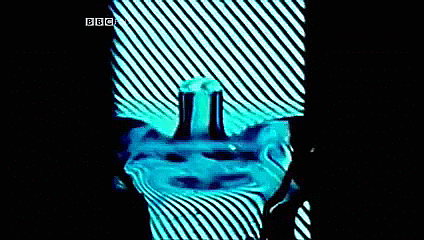
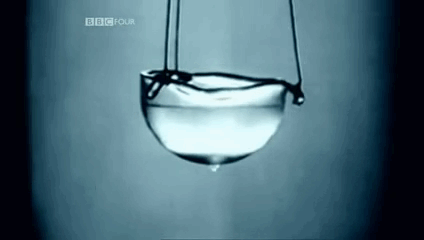
Superfluidity consists of an anomalous liquid state of quantum nature which is under a very low temperature behaving as if it had no viscosity and exhibiting an abnormally high heat transfer. This phenomenon was observed for the first time in liquid helium and has applications not only in theories about liquid helium but also in astrophysics and theories of quantum gravitation.
Helium only ends boiling at 2.2 K and is when it becomes helium-II (superfluid helium), getting a thermal conductivity increased by a million times, in addition to becoming a superconductor. Its viscosity tends to zero, hence, if the liquid were placed in a cubic container it would spread all over the surface. Thus, the liquid can flow upwards, up the walls of the container. If the viscosity is zero, the flexibility of the material is non-existent and the propagation of waves on the material occurs under infinite velocity.

Because it is a noble gas, helium exhibits little intermolecular interaction. The interactions that it presents are the interactions of Van der Waals. As the relative intensity of these forces is small, and the mass of the two isotopes of helium is small, the quantum effects, usually disguised under the thermal agitation, begin to appear, leaving the liquid in a state in which the particles behave jointly, under effect of a single wave function. In the two liquids in which cases of superfluidity are known, that is, in isotopes 3 and 4 of helium, the first is composed of fermions whereas the second is composed of bosons. In both cases, the explanation requires the existence of bosons. In the case of helium-3, the fermions group in pairs, similar to what happens in the superconductivity with the Cooper pairs, to form bosons.

Helium’s liquidity at low temperatures allows it to carry out a transformation called Bose–Einstein condensation, in which individual particles overlap until they behave like one big particle.
Superfluid in astrophysics
The idea of superfluids existed within neutron stars was proposed by Russian physicist Arkady Migdal in 1959. Making an analogy with Cooper pairs that form within superconductors, it is expected that protons and neutrons in the nucleus of a star of neutrons with sufficient high pressure and low temperature behave in a similar way forming pairs of Cooper and generate the phenomena of superfluidity and superconductivity.

The existence of this phenomenon was proven by NASA in 2011 when analyzing the neutron star left by supernova Cassiopeia A.
sources: 1, 2, 3 & 4 animation: 1 & 2
The Opportunity to Rove on Mars! 🔴
Today, we’re expressing gratitude for the opportunity to rove on Mars (#ThanksOppy) as we mark the completion of a successful mission that exceeded our expectations.
Our Opportunity Rover’s last communication with Earth was received on June 10, 2018, as a planet-wide dust storm blanketed the solar-powered rover’s location on the western rim of Perseverance Valley, eventually blocking out so much sunlight that the rover could no longer charge its batteries. Although the skies over Perseverance cleared, the rover did not respond to a final communication attempt on Feb. 12, 2019.
As the rover’s mission comes to an end, here are a few things to know about its opportunity to explore the Red Planet.
90 days turned into 15 years!
Opportunity launched on July 7, 2003 and landed on Mars on Jan. 24, 2004 for a planned mission of 90 Martian days, which is equivalent to 92.4 Earth days. While we did not expect the golf-cart-sized rover to survive through a Martian winter, Opportunity defied all odds as a 90-day mission turned into 15 years!

The Opportunity caught its own silhouette in this late-afternoon image taken in March 2014 by the rover’s rear hazard avoidance camera. This camera is mounted low on the rover and has a wide-angle lens.
Opportunity Set Out-Of-This-World Records
Opportunity’s achievements, including confirmation water once flowed on Mars. Opportunity was, by far, the longest-lasting lander on Mars. Besides endurance, the six-wheeled rover set a roaming record of 28 miles.

This chart illustrates comparisons among the distances driven by various wheeled vehicles on the surface of Earth’s moon and Mars. Opportunity holds the off-Earth roving distance record after accruing 28.06 miles (45.16 kilometers) of driving on Mars.
It’s Just Like Having a Geologist on Mars
Opportunity was created to be the mechanical equivalent of a geologist walking from place to place on the Red Planet. Its mast-mounted cameras are 5 feet high and provided 360-degree two-eyed, human-like views of the terrain. The robotic arm moved like a human arm with an elbow and wrist, and can place instruments directly up against rock and soil targets of interest. The mechanical “hand” of the arm holds a microscopic camera that served the same purpose as a geologist’s handheld magnifying lens.

There’s Lots to See on Mars
After an airbag-protected landing craft settled onto the Red Planet’s surface and opened, Opportunity rolled out to take panoramic images. These images gave scientists the information they need to select promising geological targets that tell part of the story of water in Mars’ past. Since landing in 2004, Opportunity has captured more than 200,000 images. Take a look in this photo gallery.

From its perch high on a ridge, the Opportunity rover recorded this image on March 31, 2016 of a Martian dust devil twisting through the valley below. The view looks back at the rover’s tracks leading up the north-facing slope of “Knudsen Ridge,” which forms part of the southern edge of “Marathon Valley
There Was Once Water on Mars?!
Among the mission’s scientific goals was to search for and characterize a wide range of rocks and soils for clues to past water activity on Mars. In its time on the Red Planet, Opportunity discovered small spheres of the mineral hematite, which typically forms in water. In addition to these spheres that a scientist nicknamed “blueberries,” the rover also found signs of liquid water flowing across the surface in the past: brightly colored veins of the mineral gypsum in rocks, for instance, which indicated water flowing through underground fractures.

The small spheres on the Martian surface in this close-up image are near Fram Crater, visited by the Opportunity rover in April 2004.
For more about Opportunity’s adventures and discoveries, see: https://go.nasa.gov/ThanksOppy.
Make sure to follow us on Tumblr for your regular dose of space: http://nasa.tumblr.com
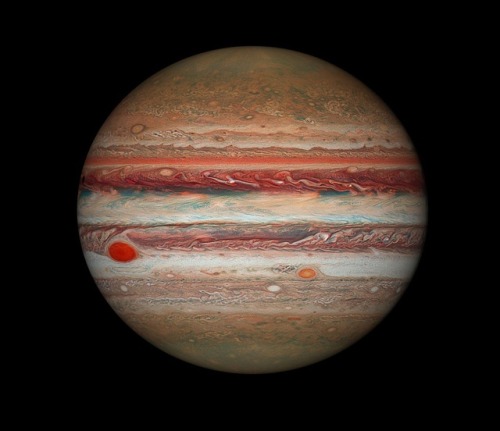
Hubble’s Jupiter and the Shrinking Great Red Spot
Image Credit: NASA, ESA, Hubble, OPAL Program, STScI; Processing: Karol Masztalerz
“The most exciting phrase to hear in science, the one that heralds new discoveries, is not ‘Eureka!’ (I’ve found it!), but ‘That’s funny…’”
— Isaac Asimov | Author - I, Robot | Professor - Biochemistry

Venus, Jupiter and Mars at Dawn - Oct 22, 2015
Image credit: Joseph Brimacombe

Our planet seen from Saturn, captured by the Cassini spacecraft
Image credit: NASA

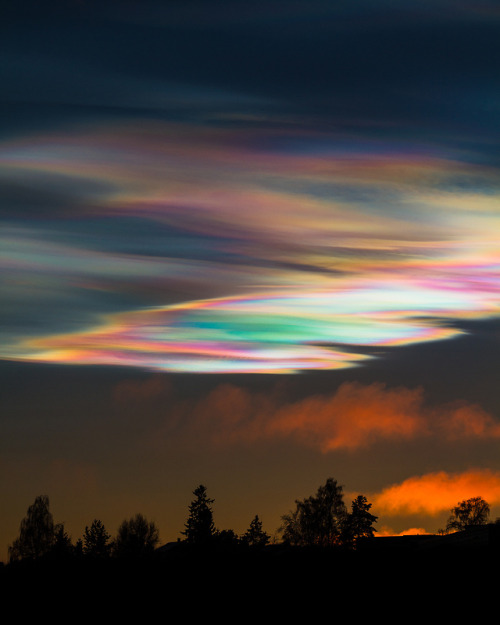
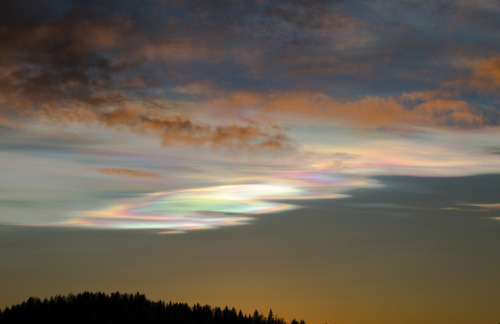

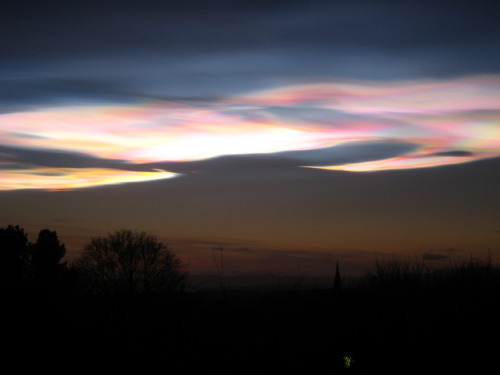


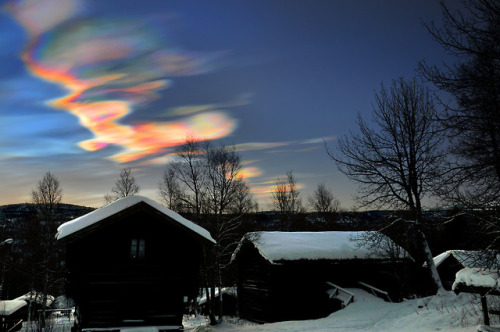
Polar stratospheric clouds or PSCs, also known as nacreous clouds, are clouds in the winter polar stratosphere at altitudes of 15,000–25,000 meters (49,000–82,000 ft). They are best observed during civil twilight when the sun is between 1 and 6 degrees below the horizon as well as in winter and in more northerly latitudes. They are implicated in the formation of ozone holes. The effects on ozone depletion arise because they support chemical reactions that produce active chlorine which catalyzes ozone destruction, and also because they remove gaseous nitric acid, perturbing nitrogen and chlorine cycles in a way which increases ozone destruction.
source / images: x, x, x, x, x, x, x, x
Free Astronomy Resources
Astronomy
Astronomy Lecture Powerpoints
Astronomy Lecture Notes (Textbook-Like)
Astronomy Notes
Astronomy Lecture Notes (Alaska)
Astronomy Lecture Powerpoints (Trinity)
Astronomy Lecture Notes (MIRA)
Astronomy Lecture Powerpoints (Rutten)
Modern Astronomy Lecture Notes
Astronomy Lecture Powerpoints (Wickman)
Solar System Astronomy Lecture Notes
Astronomy Lecture Notes
Astronomy Lecture Notes (Mitchell)
Astronomy Lecture Notes (Rochester)
Time Systems Lecture Notes
Earth and Sky Notes
Galactic Structure and Stellar Populations Lecture Notes
Stars, Galaxies, and the Universe Lecture Notes
Astronomical Techniques
Essential Radio Astronomy
Introduction to Astronomy
Physics
Equations and Formulas
Essential Physics Equations
MCAT Physics Equations
Frequently Used Physics Equations
General Physics Notes
Physics Lecture Notes (MIT)
University Physics (Textbook-Like)
General Physics I
Physics Lecture Notes (Colorado)
Physics Lecture Notes (Rochester)
Physics Lecture Notes (Cabrillo)
Physics Lecture Notes (Trinity)
Physics Notes
Physics Videos (Flipping Physics)
Physics Ch 1 to 8 Lecture Notes
Feynman Physics Lecture Notes
Electromagnetism
Electromagnetism Lecture Notes
Feynman Electromagnetism and Matter Lecture Notes
Mechanics
Mechanics (Physics) Lecture Notes
Mechanics (Physics) Powerpoint Slides
Feynman Quantum Mechanics Lecture Notes
Physics and Astronomy
Physics of the Interstellar Medium Lecture Notes
Physics for Astronomy Lecture Notes (Textbook-Like)
Radio Astronomy (Physics 728)
Physics: Astronomy, Astrophysics, and Cosmology
Inorganic Chemistry
Inorganic Chemistry Chapter Notes
Inorganic Chemistry Lecture Notes
Inorganic Chemistry 2 Lecture Notes
Advanced Inorganic Chemistry Lecture Notes
Calculus
Formulas and Equations
Calculus Cheat Sheet
AP Calculus Basic Formulas and Properties
Calculus 1 Formulas
Basic Calculus: Rules and Formulas (Video)
Differential Formulas
Integral Calculus Formulas
The Basics
Basic Calculus Refresher
Single Variable Calculus
Multivariable Calculus (Textbook-like)
Basics of Calculus (Textbook-like)
Calculus for Beginners
Calculus 1
Calculus (Textbook-like)
Calculus 1 (Textbook-like)
Calculus 1 Video Lectures
Calculus 1 Lecture Notes
Calculus 1 Lecture Notes (Northern Illinois)
Calculus 1 Lecture Notes (Citadel)
Calculus 1 Compact Lecture Notes
Calculus Lecture Notes (Raz Kupferman)
Introduction to Calculus Lecture Notes
Calculus 2
Calculus 2 Lecture Notes
Calculus 2 Lecture Notes (Northern Illinois)
Calculus 2 Notes (Illinois State)
Calculus 2 Lecture Notes (McClendon)
Calculus 2 Lecture Notes (Textbook-like)
Calculus 2 (Textbook-like) (Dawkins)
Calculus 2 Lecture Videos
Calculus 2 Class Notes
Calculus 2 Materials (Notes, Handouts, Etc.)
Calculus 3
Calculus 3 Lecture Notes (Lamar)
Calculus 3 Lecture Videos
Calculus 3 (Dawkins)
Calculus 3 (Notes, Homework, Quizzes)
Notes for Calculus 3
Calculus 3 Class Notes
Other Calculus
Integral Calculus Lecture Notes
Algebra and Differential Calculus
Differential and Integral Calculus (Textbook)
Differential and Integral Calculus (Lecture Notes & Old Exams)
Computer Science Calculus Lecture Notes
Calculus for Physics C
Analytic Geometry and Calculus 2
History
Notes on the History of Astronomy
History of Astronomy Powerpoint
Early History of Astronomy
History of Radio Astronomy
NASA History
Neolithic Astronomy
Mesopotamian Astronomy
Islamic Astronomy
Indian Astronomy
Greek Astronomy
Chinese Astronomy
Egyptian Astronomy
Mayan Astronomy
Space Agencies
National Aeronautics and Space Administration
South African National Space Agency
Canadian Space Agency
National Space Research and Development Agency
Italian Space Agency
Norwegian Space Center
Korea Aerospace Research Institute
Japan Aerospace Exploration Agency
UK Space Agency
Australian Space Agency

Earthrise, Apollo Moon Landing
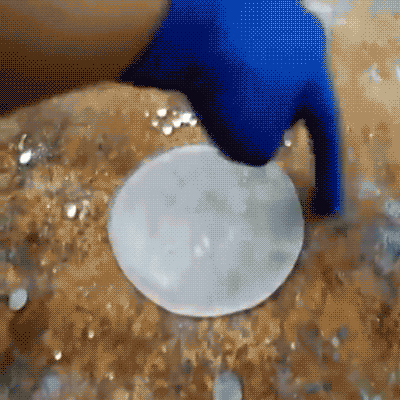
-
 fictionfanteen liked this · 3 years ago
fictionfanteen liked this · 3 years ago -
 fanthyng-mego reblogged this · 3 years ago
fanthyng-mego reblogged this · 3 years ago -
 fuzzysocksbean liked this · 4 years ago
fuzzysocksbean liked this · 4 years ago -
 exhausted-physicist liked this · 4 years ago
exhausted-physicist liked this · 4 years ago -
 arialis reblogged this · 4 years ago
arialis reblogged this · 4 years ago -
 colderdelusion liked this · 5 years ago
colderdelusion liked this · 5 years ago -
 1doctorsherlockwinchester reblogged this · 5 years ago
1doctorsherlockwinchester reblogged this · 5 years ago -
 hunternotagatherer liked this · 5 years ago
hunternotagatherer liked this · 5 years ago -
 blight-eyed liked this · 5 years ago
blight-eyed liked this · 5 years ago -
 gay-goatman liked this · 5 years ago
gay-goatman liked this · 5 years ago -
 beaverhaus-en liked this · 5 years ago
beaverhaus-en liked this · 5 years ago -
 imakemyselfanew liked this · 5 years ago
imakemyselfanew liked this · 5 years ago -
 tinypieceofpink liked this · 6 years ago
tinypieceofpink liked this · 6 years ago -
 universe-pit liked this · 6 years ago
universe-pit liked this · 6 years ago -
 acealsai liked this · 6 years ago
acealsai liked this · 6 years ago -
 inkblackshadows liked this · 6 years ago
inkblackshadows liked this · 6 years ago -
 nickpiano1 liked this · 6 years ago
nickpiano1 liked this · 6 years ago -
 winnielate liked this · 6 years ago
winnielate liked this · 6 years ago -
 a-certified-whovian liked this · 6 years ago
a-certified-whovian liked this · 6 years ago -
 riekod reblogged this · 6 years ago
riekod reblogged this · 6 years ago -
 chrononverse liked this · 6 years ago
chrononverse liked this · 6 years ago -
 official-heartbreaker liked this · 6 years ago
official-heartbreaker liked this · 6 years ago -
 nerd-with-birds liked this · 6 years ago
nerd-with-birds liked this · 6 years ago -
 electric-sapphire liked this · 6 years ago
electric-sapphire liked this · 6 years ago -
 robbiedowning99 liked this · 6 years ago
robbiedowning99 liked this · 6 years ago -
 flock-of-feral-plague-doctors liked this · 6 years ago
flock-of-feral-plague-doctors liked this · 6 years ago -
 my-poor-fangirl-heart liked this · 6 years ago
my-poor-fangirl-heart liked this · 6 years ago -
 torinhau liked this · 6 years ago
torinhau liked this · 6 years ago -
 rindedsky liked this · 6 years ago
rindedsky liked this · 6 years ago -
 langka-ng-turon liked this · 6 years ago
langka-ng-turon liked this · 6 years ago -
 inspadefuls reblogged this · 6 years ago
inspadefuls reblogged this · 6 years ago -
 inspadefuls liked this · 6 years ago
inspadefuls liked this · 6 years ago -
 tumbleweed-chaser liked this · 6 years ago
tumbleweed-chaser liked this · 6 years ago -
 hannibalblinchik-blog liked this · 6 years ago
hannibalblinchik-blog liked this · 6 years ago -
 martouille liked this · 6 years ago
martouille liked this · 6 years ago -
 diaryofastemstudent liked this · 6 years ago
diaryofastemstudent liked this · 6 years ago -
 mathpunsaresin-blog liked this · 6 years ago
mathpunsaresin-blog liked this · 6 years ago -
 waitingforgalois reblogged this · 6 years ago
waitingforgalois reblogged this · 6 years ago -
 waitingforgalois liked this · 6 years ago
waitingforgalois liked this · 6 years ago -
 carlscookies reblogged this · 6 years ago
carlscookies reblogged this · 6 years ago -
 carlscookies liked this · 6 years ago
carlscookies liked this · 6 years ago -
 tens-tensor-tensest reblogged this · 6 years ago
tens-tensor-tensest reblogged this · 6 years ago